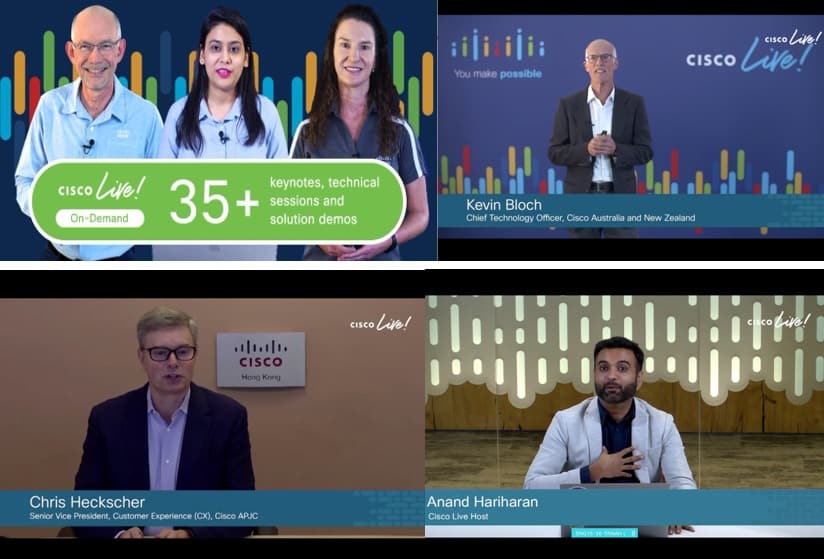Author, Mark Phibbs
As shutdowns occur on a daily basis for the time being, an increasing number of employees are working from home. Businesses have been turning to video conferencing to aid with collaboration and carry on meetings. In this time, many businesses have also been forced to reconsider their events strategy to aid with the latest at-home movement.
Technology affords us opportunities to do things differently. For marketers, the possibilities are endless, from live video broadcast to stored video on demand. In fact, many are transitioning to hold their massive in-person events on a virtual stage, looking at video conferencing in lieu of cancelling physical activations. At Cisco, we did the same. Our premier in-person customer and partner experience of the year, Cisco Live, was relaunched as a complimentary, full-scale two-day digital event (1-2 April), enabling more than 10 million views from remote participants all around the world.
Digital events have their own perks. Unlike big in-person events which can leave little room for things to go wrong—a last minute change could mean expensive airline and hotel cancellations, event space fees, rescheduled meetings, and rushed plans – digital events offer flexibility in communications with attendees, the ability to “join” at different time zones or at convenience, and the ability to have discussions during and after the duration of the event.
Here are some best practices for keeping digital events going in the pandemic and into the future.
Embracing an online format. Producing a best-in-class digital event starts with basic marketing principles, from outside-in thinking, experiential engagement, and scaling beyond the event. First things first, they need to be designed from the perspective of what the audience wants. Audiences want to feel like they are at a unique event with the most interesting people, with the greatest depth of knowledge, in ways that surprise and excite them.
It is imperative to start audience engagement as early as during registration by enabling personalised content and a customised experience. During the event, added engagement to an otherwise passive keynote can help attendees feel a personal connection to the speaker. At Cisco Live, Miyuki Suzuki, President, Cisco APJC, shared an inspirational overview of our commitment to customers and partners in this unprecedented time as well as interactive customer case studies which provided exclusive, authentic and shareable content.
Digital events are also just the beginning, not the end. They need to be used to springboard thought-provoking conversations that go on well after the event concludes. Not only should attendees be able to see content live, content needs to be accessible on demand, available to stream online or downloadable to watch offline at the viewer’s convenience anytime, anywhere.

Our concentrated-value oriented strategy of keeping sessions to a maximum of 30 minutes at Cisco Live paid off with incredible results. Our online viewers took time to be with us, spending an average of 24 minutes on the site, to be educated on our latest abilities to support them. They also had our chat windows go into overdrive as our engineers responded to nearly 700 questions in real-time!
Collaboration without compromise. The key to the success of many businesses despite the challenges posed by the current environment is to continue to engage with customers. While face-to-face networking and meeting personally with customers and partners are irreplaceable, digital events are critical to long-term success as they help businesses to understand customer challenges, identify growth opportunities and showcase their latest innovations.
Finally, foundational to the digital event experience, is security. When businesses use technology to deliver online meetings and events, they are building company intellectual property and therefore must do everything they can to protect the integrity of the business, employees and customers.
We are just starting to see a glimpse into the new standard of digital events. The future of which could see the integration of platforms, interactive polling, and perhaps even automatic video sharing. In these extraordinary times, businesses must find new ways to create momentum, customer experiences and bring new virtual capabilities to life. Technology will be the bridge to overcoming some of the greatest challenges we are facing and realising some of the biggest opportunities.
Mark Phibbs is the Vice President, Marketing at Cisco APJC.
Do you have an article, infographic, podcast, presentation slides, press release or a key individual from your organisation that you'd like to highlight on Marketing In Asia? Head on over to Upload Your Content for more info.



















